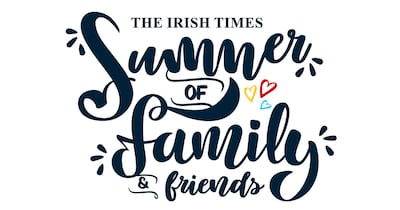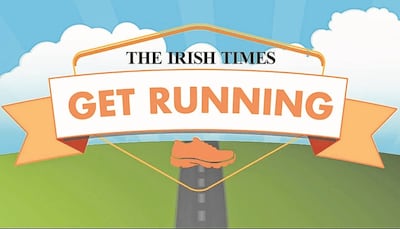
Look down at your feet. Spread your toes wide (or as wide as your shoes will allow) imagine playing piano with your toes. Our feet can really only move as much as our shoes allow and most shoes (running shoes included) trap our feet in positions where we cannot stretch our toes and foot muscles to their full potential. But summer time brings more focus to this often neglected part of our body.
It’s time to set our feet free.
Summer running niggles
One of the most common complaints I hear from runners this time of the year is tightness in their lower leg muscles. It is no coincidence that that these niggles happen as the summer starts and our day-to-day shoe choices offer less support and cushioning than earlier in the year. After a winter (or indeed many years) of being enclosed in shoes, our feet are generally quite weak and need to transition to summer footwear gradually. But many of us move literally overnight to summer sandals or flip-flops without any consideration of how much our feet need to adapt to their new position.
Consider the Flip-Flop
When we wear sandals that do not have an ankle strap to keep the foot in place, our toes grip to keep the shoe on our feet. This gripping action tightens the tissue along the sole of the foot often right up into the calf muscles. Add to this the overnight move from a shoe with a heel (even a small one) to a flat rubber sole like a flip-flop which has no heel, and it’s no wonder the body can be feeling the strain as it adapts to find balance and stability.
The impact on running
If you do notice that your calves feel tighter than usual or if feel heavy legged and tight near the ankles, don’t instantly blame your running technique or your weekend sprint finish. Often the change of footwear outside of running can trigger these new aches and pains. Weak muscles take time to adapt and naturally will tire much quicker than those muscles which we use more regularly. As runners we are very body aware and may only notice the issue when we start to run.
Strengthen our feet
One way to help your feet transition for summer is to give them a little workout. They will benefit from a good stretch, muscle activation and even a nice massage. Start by slipping off whatever shoes you are wearing. Spread your toes wide and lifting up one foot attempt to interlace a finger between each of your toes toes. You might not get very far the first time, but gradually the muscles will expand. You could also try lifting your big toe off the ground while leaving the other toe on the ground, and reverse by lifting the four smaller toes and leaving the big toe connected to the ground. In fact, move your toes any way you can, any time you think of it, to encourage your feet to become more foot shaped than shoe shaped!
Massage your feet
The nicest way I enjoy working on my feet is to give them a massage. Keep a small ball, such as a tennis ball, under your desk and literally roll your feet over it. Either sitting or standing, the aim is not to inflict pain but instead to wake up the tissue, notice tight spots and generally get more circulation into the sole of your foot. I often combine this with calf stretches to really help release any tension built up in the lower limb. When the lower legs are release, the entire back your body right up to your neck has less tension pulling on it.
Walking on hot coals
You can also wake up your feet by getting the accustomed to walking on uneven surfaces. Our feet can be very sensitive to anything other than flat ground after being cosy in our shoes for so long. While young kids will often run across a gravel path barefoot, most of our adult feet have been so protected by shoes that any surface underfoot that is not flat can be a challenge. Summer is the perfect time to play around with this and encourage more movement and texture under our feet. Wear your socks at first if your feet are still a little too cautious to relax over the uneven ground while barefoot.
Is barefoot best?
I generally don’t encourage a move to barefoot running unless the runner is very competent and comfortable barefoot walking and has strong feet and lower legs to support the body. But what I do find really enjoyable for runners is a very short barefoot jog at the end of a run. Pop off your shoes even just for 200 metres at the end of your run and notice how your body feels running barefoot on grass or sand. You might be surprised at how different it feels to your regular running gait. Once you finish enjoy a few minutes of stretching barefoot in the warm summer air. There is great freedom in being barefoot but also somewhat risky if you rush into it too fast.
Go at your pace
If you have foot issues or wear orthotics or specific shoes be aware of any sudden changes to your shoe choices or any barefoot work. Speak to your specialist and ask for advise on how you can work to strengthen your feet long-term rather than just have a shoe do the work for you. We might not all be running barefoot, but we could all benefit from stronger feet for healthy aging. Strong feet help the rest of your body too, not just the lower legs. Whatever condition your feet are in, notice when you grip your toes and aim to relax and wiggle them. Move whatever way you can and experiment with new ways of movement.
Let’s treat our feet
One great thing about the summer season is that we are simply more likely to remember to look after our feet because we see them so often. We also are more likely to move in different ways as we spend time outdoors, on hills or uneven surfaces. So paint the toenails or wear the pretty sandals, but most importantly help your feet (and the rest of your body) feel better by adapting gradually. The better our feet feel this summer the more likely you will be tempted to walk, run or explore.
Your feet have worked hard for you all year – give them a treat this summer.

Sign up for one of The Irish Times' Get Running programmes (it is free!). First, pick the eight-week programme that suits you. - Beginner Course: A course to take you from inactivity to running for 30 minutes. - Stay On Track: For those who can squeeze in a run a few times a week. - 10km Course: Designed for those who want to move up to the 10km mark. Best of luck!
Mary Jennings is founder and running coach with ForgetTheGym.ie. Her summer running programmes in Dublin and online are now open for booking.










